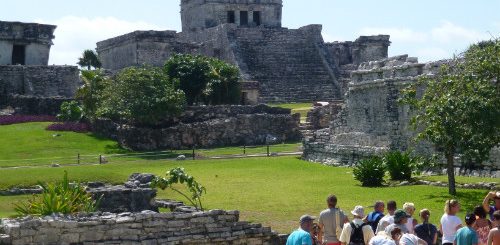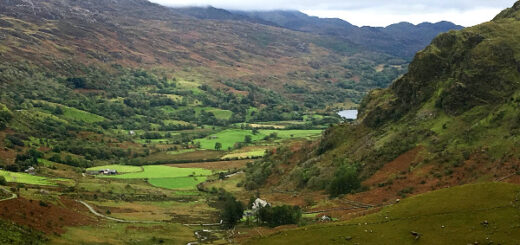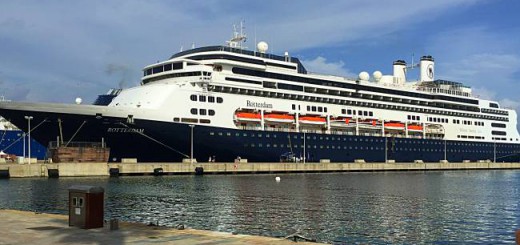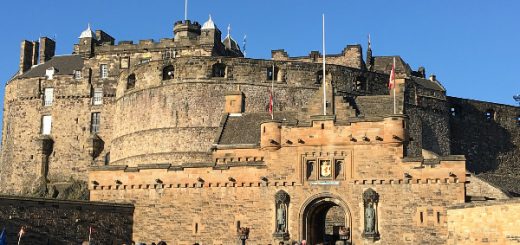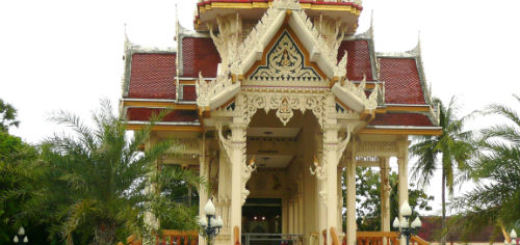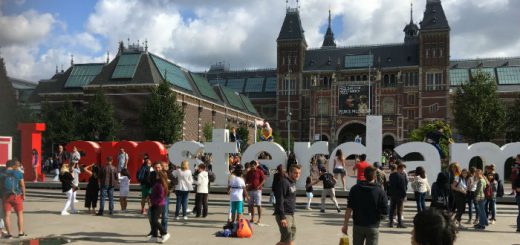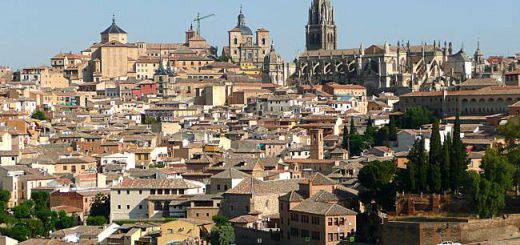Bratislava – Capital of Slovakia
Bratislava’s unique position between the borders of two countries – Austria and Hungary – meant, historically, that its location was of strategic importance to the competing powers. Consequently it was known by several other names and did not get its current name until 1919. Not until Slovakia’s independence in 1993 did it become a capital city.

Leaving Vienna, our river ship sailed east along the Danube through wide floodplains and marshland, finally reaching Bratislava only 18km away. Here was a charming and vibrant city whose Old City reflected the fanciful Baroque and Rococo architectural styles of its heyday. We disembarked to meet our guide who would show us the main sights of the city and then allow us free time to wander.
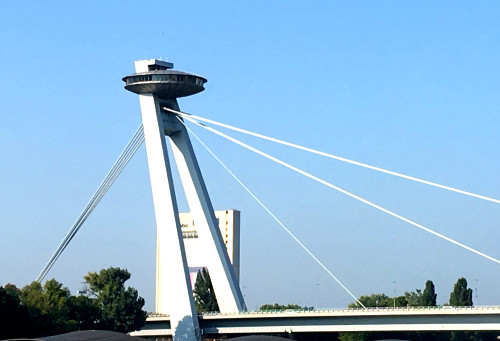
The ship docked near the New Bridge (Most SNP) which stands in dramatic contrast to the Old City, looking like a UFO as it is affectionately called. This is because of its unique observation deck at a height of 95 metres, which also houses a restaurant, and is reached using an elevator in one of the pylons. Built in the late 60s and early 70s, it is the 7th largest hanging bridge in the world .
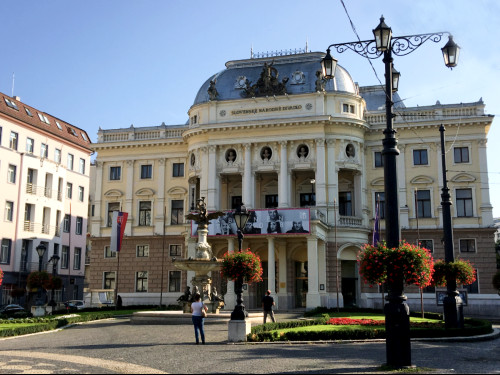
From there we followed our guide to the Hviezdoslav Square to the old Slovak National Theatre, built in a neo-Renaissance style, yet only opened in 1920. The square itself is more of a boulevard, with many trees, park benches and a long series of fountains and a statue of its namesake who was an important Slovak poet. Outdoor restaurants, bars and cafes are all around this pedestrian precinct.

Next we came upon the Gothic Cathedral of St Martin on Rudnay Square, the most important religious building in Bratislava, built in the 15th and 16th centuries. At the top of its 85m high spire a golden crown signifies that this church was the site of many coronations of the rulers of Hungary, such as that of Maria Theresa who ruled Hungary, and later the Holy Roman Empire, from 1741 to 1780.
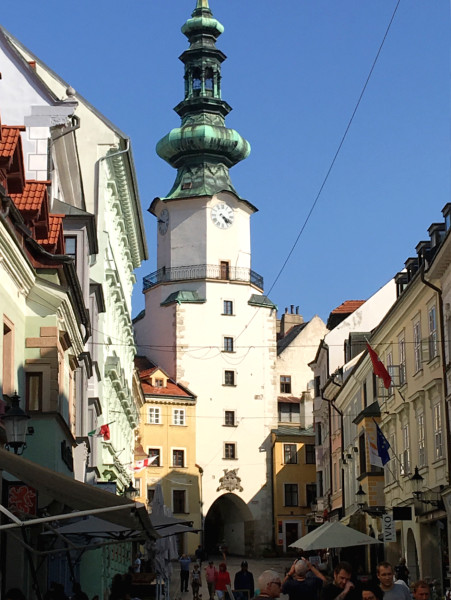
Taking the narrowest street of Bratislava, Baštová Street, we found ourselves admiring the view of Michael’s Gate and Tower. This is the last remaining of the main entrances to the Old Town, built in the 13th century. At the top is a museum and an observation point. From there we entered the bustling streets of downtown, with specialty stores, antique shops and stalls selling traditional crafts and products such as lace, embroidered tablecloths, ceramics, glass and carved wooden figures.
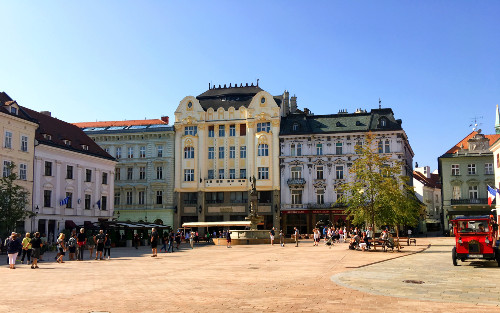
The main square of Bratislava – Hlavné Námestie – lies at the heart of the city’s charming lanes and alleyways. This is the former market square which is surrounded by many cafés and historic buildings with attractive façades. Here you can also board the red Presporacik tourist train which will take you past the main tourist sights on the way up to the castle.
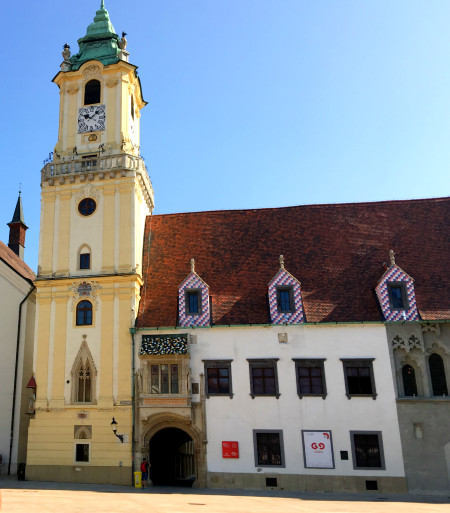
To the east side of the square is the Old Town Hall. Although it is a complex of various buildings in various styles, built over a considerable period of time, the tower itself dates from 1370. It’s therefore considered one of the oldest stone buildings still standing in Bratislava. Today it houses the city museum. Our guide pointed out where a cannonball, fired during an attack on the city in 1809 by Napoleon’s army, is embedded in the tower wall.
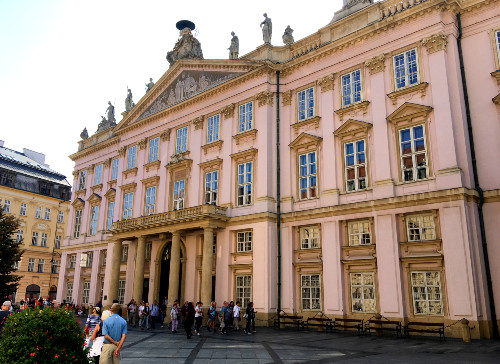
Nearby stands the Primate’s Palace, a pretty pink and gold neo-classical building constructed in the late 18th century for the Archbishop and later used as the Presidential Palace. Now it is the seat of the city mayor.
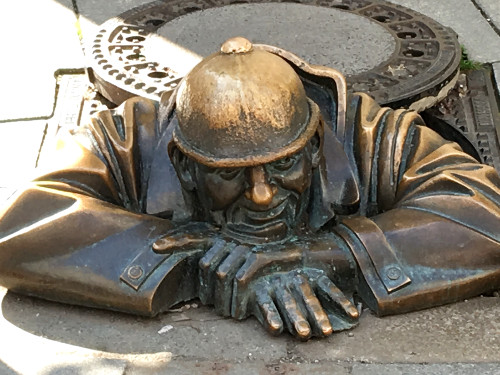
Leaving the centre of the Old Town, those of us with the stamina continued up towards the fortress at the top of the hill. On the way, at the junction of Laurinská and Panská streets, we were were amused to see a curious sight – a man’s head poking out of a manhole. This bronze creation known as Čumil (the watcher), or Man at Work, is one of the many – often humorous – statues dotted around town. It is suggested that he likes to look up ladies’ skirts! Our guide explained that his head is shiny due to the superstition that if you rub it your secret wish will come true.

The Fortress (Hrad) is the most significant attraction of the city. It sits high above the city and was an important stronghold in various incarnations over the centuries. The Castle we saw was built about 1430 but only assumed its final form in the 17th century. Unfortunately it was gutted by fire in 1811 and lay in ruins for about 150 years. Restoration work began in 1957 but stalled in 1968. Final reconstruction was finished in 2010. It now serves as a venue for the Slovak Parliament and houses collections of the Slovak National Museum.
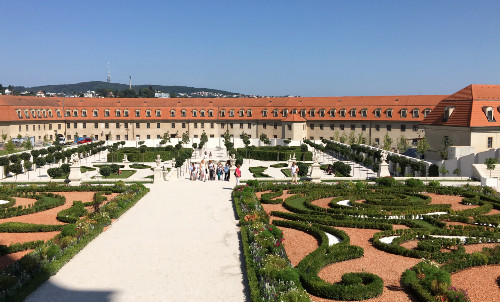
The Castle hosts many expositions and is an ideal place for walks with beautiful surroundings of lawns, trees and gardens. A new baroque garden behind the Castle was opened in June 2016 to complement the baroque style used in much of the Castle buildings.
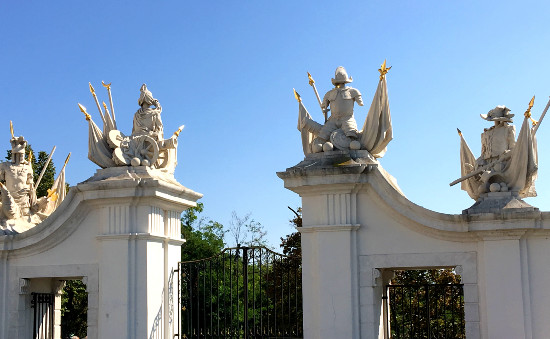
The main Castle building includes 4 towers, one at each corner. There are also four gates, but the most spectacular one, by which we and most tourists entered, consists of a triumphal entrance that leads into the ‘Yard of Honour’ with fabulous panoramic views over the old town, the river and the modern city beyond. Only then did we become aware of how big the city of Bratislava really is.
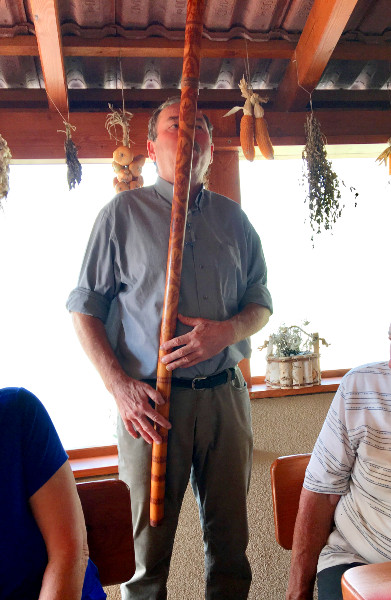
Before leaving Bratislava, we were treated to a home visit experience. Coaches ferried the ship’s guests out to the suburbs to various homes where the locals welcomed us for lunch. Our hosts were in the town of Šenkvice, in a modestly furnished house, adorned with various artworks and ceramics created by the lady of the house who is an artist. She also had very good English, fortunately. We got the full house and garden tour, finishing with a lovely meal outside under a pergola. Included in the meal were some potato and cheese Slovak ‘pizzas’ as well as a sweet version containing raspberries. Most of the foods offered had been grown in their garden, while the sausage, cheese and white wine were locally made. To round off the experience, our hosts invited us to sing a folk song with them – lyric sheets provided in Slovak! – to the accompaniment of a Fujara, an enormous flute traditionally played by shepherds. A charming and enjoyable afternoon.

